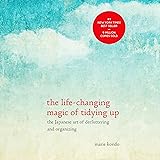Transforming a house into a home often involves a journey of personal expression and thoughtful design. Yet, along this exciting path, many individuals encounter common decorating pitfalls that inadvertently diminish the overall appeal of their living spaces. It is essential to recognize these widespread errors to create an environment that feels both sophisticated and welcoming. The accompanying video delves into specific missteps that can make a home appear less refined, offering valuable insights into rectifying them.
This article aims to complement those visual lessons by further exploring some critical decorating mistakes and providing actionable strategies to elevate your home’s aesthetic. We will discuss foundational design principles and offer practical solutions, ensuring your space reflects comfort, style, and a touch of effortless elegance. Understanding these nuanced aspects of interior decor is the first step toward crafting a truly beautiful home environment. Achieving a polished look does not necessarily require a significant financial investment; rather, it often hinges on careful consideration and strategic adjustments.
Overlooking the Power of Proper Lighting in Home Decor
One of the most pervasive decorating mistakes homeowners make involves underestimating the profound impact of effective lighting. Poor lighting choices can render even the most exquisitely designed room dull, uninviting, and visually cramped. Often, a single overhead fixture is relied upon to illuminate an entire space, creating harsh shadows and a lack of depth. This singular approach fails to account for the varying needs of different areas within a room, which can significantly affect its functionality and mood.
To counteract this, embrace the concept of layered lighting, which combines several types of light sources to achieve a balanced and versatile ambiance. Incorporate ambient lighting through recessed cans or attractive ceiling fixtures to provide general illumination. Supplement this with task lighting, such as reading lamps or under-cabinet lights, which focus illumination on specific work areas. Accent lighting, like picture lights or spotlights, can then be utilized to highlight artwork or architectural features, adding visual interest and creating a sense of dimension. Additionally, consider the warmth of the light bulbs you select; choosing bulbs in the 2700K to 3000K range often yields a warmer, more inviting glow, enhancing the perceived coziness of a room.
The Pitfall of Mismatched Furniture and Scale Issues
Another common misstep involves furniture selection that is either mismatched in style or inappropriately scaled for the room. Placing oversized furniture in a small room can make the space feel cramped and overwhelming, while tiny pieces in a large room can appear lost and insignificant. This imbalance disrupts the visual harmony and functionality of the area, creating an uncomfortable and less appealing environment. A cohesive design relies heavily on thoughtful consideration of both the individual pieces and their collective presence within the space.
Before purchasing furniture, meticulously measure your room dimensions and create a basic floor plan to ensure proper fit and flow. Aim for a balance where furniture pieces relate to each other in terms of scale and proportion, allowing for comfortable movement and visual breathing room. Consider investing in multi-functional pieces, such as ottomans with storage or extendable dining tables, which adapt to various needs without cluttering the space. Consistency in design style across your furniture selections helps to foster a sense of unity and sophistication, preventing the space from looking haphazard or disjointed. Thoughtful arrangement of furniture can significantly enhance the overall aesthetic and utility of any room, preventing decorating mistakes.
Underutilizing or Misusing Wall Decor and Artwork
Blank walls often indicate a missed opportunity to inject personality and visual interest into a home, but equally problematic is improperly hung or scaled artwork. Hanging small pieces too high, or overcrowding a wall with too many disparate items, can make a space feel disorganized or unfinished. Artwork and wall decor should serve as focal points and complement the room’s overall design narrative. Many individuals struggle with finding the right balance between too much and too little, often leading to either sparse or overly busy walls.
When curating your wall decor, consider the “rule of thirds” to guide placement, ensuring pieces are hung at an eye-level average, approximately 57-60 inches from the floor to the center of the art. Choose artwork that is appropriately scaled for the wall it occupies; a large wall can accommodate a single substantial piece or a carefully curated gallery wall, while smaller walls benefit from one to two well-chosen items. Frame choices also play a crucial role; cohesive framing can tie together diverse pieces, creating a polished and intentional look. Thoughtful arrangement of wall decorations can elevate a room, making it feel complete and thoughtfully designed, avoiding common decorating mistakes.
Ignoring the Importance of Cohesive Color Palettes
A fragmented or haphazard color scheme is a frequent culprit behind homes that lack a sense of polish and continuity. Using too many disparate colors without a unifying theme can create a chaotic and visually jarring environment, preventing the space from feeling harmonious. Often, individual rooms are decorated without considering their relationship to adjacent spaces, leading to an inconsistent flow throughout the home. Color is a powerful tool in interior design, capable of influencing mood and spatial perception.
Develop a cohesive color palette by selecting a primary neutral color for larger areas and then introducing two to three complementary accent colors. Utilize a 60-30-10 rule: 60% dominant color (walls), 30% secondary color (furniture), and 10% accent color (accessories). This approach ensures balance and visual interest without overwhelming the senses. Consider how colors transition from one room to another, aiming for a natural progression that maintains a sense of flow. Even subtle variations of a single color family can create depth and sophistication, ensuring that your decorating choices contribute positively to the overall ambiance, rather than making your home appear cheap.
Clutter and Lack of Organization Undermining Aesthetics
Accumulated clutter is perhaps one of the most immediate and visible decorating mistakes that can instantly make a home feel less refined and more disorganized. Surfaces covered with miscellaneous items, overflowing shelves, and jumbled personal belongings create visual noise that distracts from any intentional design efforts. Beyond aesthetics, clutter also contributes to a sense of stress and inefficiency, impacting daily living. An organized space communicates intentionality and care, enhancing the perceived value of your home.
Implement smart storage solutions to contain items and maintain clear surfaces. Invest in attractive baskets, decorative boxes, and functional furniture pieces with hidden storage compartments. Regularly declutter your home by adopting a “one in, one out” policy or dedicating specific times for tidying. Categorize items and assign them designated homes, making it easier to maintain order. A minimalist approach to display, showcasing only cherished or aesthetically pleasing items, allows your chosen decor to shine without being overwhelmed by extraneous objects. This systematic approach to organization is fundamental in preventing decorating mistakes and fostering an elegant home environment.
Misusing Textiles and Window Treatments
The selection and application of textiles, including curtains, rugs, and throw pillows, can significantly impact a room’s perceived warmth, texture, and sophistication. However, choosing the wrong sizes, materials, or hanging methods for window treatments, or selecting rugs that are too small, are common decorating mistakes that detract from a space’s polished look. Curtains that stop short of the floor or are too narrow for the window can appear ill-fitting and cheap. Similarly, rugs that fail to anchor furniture pieces create visual imbalance.
For window treatments, always opt for curtains that extend to the floor, or ideally, just kiss the floor, for a more luxurious and finished appearance. Hang curtain rods wider than the window frame and several inches above it to create the illusion of larger windows and higher ceilings. When selecting rugs, ensure they are large enough to comfortably accommodate at least the front legs of all major furniture pieces in a seating arrangement. This creates a cohesive “zone” and grounds the furniture. Experiment with various textures and patterns in throw pillows and blankets to add visual interest and comfort, ensuring they complement your existing color scheme and overall decorating style. Thoughtful use of textiles enhances comfort and contributes significantly to the sophisticated feel of any interior.
Ignoring the Importance of Scale and Proportion
Understanding and applying the principles of scale and proportion is crucial for achieving a balanced and aesthetically pleasing interior. Ignoring these fundamental concepts often leads to decorating mistakes where elements within a room appear either too large or too small for their surroundings. For instance, a petite table paired with an enormous sofa, or a tiny vase on a grand mantelpiece, creates a visual disharmony that can make a space feel awkward or unfinished. Each object in a room should relate meaningfully to the others and to the room itself.
Begin by assessing the overall dimensions of your room, including ceiling height, and then select furniture and decor that align with these measurements. Consider the visual weight of items; a chunky wooden coffee table will have a different impact than a slender glass one, even if both occupy a similar footprint. When grouping items, ensure they are in proportion to each other and form a cohesive unit. For example, a gallery wall should contain pieces that, when viewed collectively, form a balanced shape that fits the wall space. Harmonious scale and proportion create a sense of order and elegance, preventing your home from looking cheap and instead fostering a sophisticated atmosphere.
Neglecting the Power of Personalization and Authenticity
A home that lacks personalization can often feel sterile, generic, and devoid of character, reflecting decorating mistakes rooted in an absence of unique expression. Relying solely on trendy decor items without integrating personal touches can result in a space that feels uninviting and temporary. Authenticity in design means allowing your home to tell your story, showcasing items that hold meaning and reflect your interests, travels, and values. This approach prevents your interior from appearing mass-produced or impersonal, which often reads as “cheap.”
Infuse your personality into your decor by displaying cherished photographs, souvenirs from travels, beloved books, or handcrafted items. Mix vintage finds with contemporary pieces to create a rich, layered aesthetic that feels lived-in and unique. Avoid purchasing entire sets of decor items from a single store; instead, collect pieces over time that resonate with you. Thoughtfully curated collections, whether of art, ceramics, or textiles, add depth and narrative to a space. When a home genuinely reflects its inhabitants, it exudes warmth and character that no amount of expensive, impersonal decor can replicate, effectively fixing many decorating mistakes.











